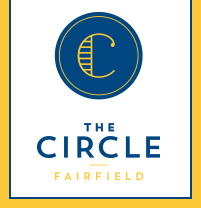Welcome to the charming town of Fairfield, Connecticut where you’ll find wonderful parks, marinas, and plenty of open space where you can enjoy the tranquility of nature. Did you know that our beautiful town is also steeped in American history? As you explore Fairfield, you’ll begin to see glimpses of our town’s interesting past in our collection of historical buildings and landmarks.
The Original Settlers Of Fairfield The area that surrounds and includes Fairfield was first settled as far back as 1635 when Puritans and Congregationalists began migrating to the area with the goal to build a society of their own. As the population slowly increased in the area, The Colony of Connecticut became established as it’s own entity in 1639 ushering in a reason for those early settlers to begin claiming and naming their new towns. Throughout those early days the settlers farmed the land, built their congregations, and created their society. Over time the town split into distinct and separate townships. In 1661 a line was drawn between Fairfield and Stratford. Then again a new line appeared in 1685 to define Norwalk.
Fairfield And The American Revolutionary War In 1775 the American Revolutionary War broke out and Fairfield was significantly impacted. The people of Fairfield sided with the independents from the very beginning making them a target for the British Troops that maintained control of nearby Long Island. Though Fairfield set up a strong defensive front to protect themselves, their efforts were broken in 1779 when the British sent 2,000 invading troops into the town. On July 7, 1779 the invaders set fire to the entire town and burned Fairfield to a pile of smoldering ash. Homes, farms, churches, and businesses were completely destroyed leaving the townspeople completely devastated. Over time Fairfield rebuilt itself. New buildings and residences were erected and the people slowly recovered from the tragic burning.
Growth And Development During The Twentieth Century As time moved forward, Fairfield did, too. Until World War I began in 1914 this area was mostly an agriculturally based place. However, due to the increasing demand for munitions, a factory was built in nearby Bridgeport to build arms for the war. As the demand for jobs increased the town of Bridgeport boomed eventually spilling its population into the nearby townships. Workers flocked to Fairfield where they built their homes and thrived until the stock market crashed in 1929. The Great Depression brought destitution to many of America’s greatest towns and cities, but its impact on Fairfield was different. Though Fairfield was still directly hit like everywhere else in the country, our town’s population kept expanding. General Electric had established their headquarters in the area in 1892, paving the way for Fairfield’s continued growth even during the toughest times in American history.
Notable Historical Sites And Where To Find Them Fairfield’s Historic District consists of an impressive collection of old time buildings and landmarks . It’s an enchanting place to spend an afternoon. A self-guided walking tour around the 60 acre area will bring you to historical gems like the old Town Hall building, The Town Green, and the old Burr Mansion where you’ll get a glimpse of times past. Find the Fairfield Historic District on Old Post Road between U.S. Route 1 and Turney Road. The Fredric Bronson Windmill located at 3015 Bronson Road was built in 1893-94. At that time in history, windmills were a common sight. Today the 105 foot tall Bronson Windmill showcases the fine architectural and engineering skills of the late 19th century. It once pumped well water into a 7,500 gallon storage tank built into the windmill in order to water the Bronson farm. Today the windmill is used as an active cell phone tower.
The Pine Creek Park Bridge was constructed between 1870-1872 and is listed on the National Register of Historic Places. Originally created for the railroad, it is a wrought-iron made Pony truss bridge. It was built to handle the heavy loads of trains by balancing tension and compression throughout it’s design. The most interesting thing about this bridge is that it was moved from it’s original location on Mill Hill Road to its current location on Pine Creek. That is why you may overhear a few of the older locals still refer to it as Mill Hill Road Bridge.
The Jonathan Sturges House is a treasure of Gothic Revival architecture with its steeply pitched gable style roof, first floor veranda, and latticed trim that signifies this style. The main part of the house was built in 1840 with additions to the property added in 1846, 1883, and 1895. There are over 30 rooms, 11 staircases, and 13 fireplaces inside. This beautiful home is registered as a National Historic Landmark and you can view the house at 449 Mill Plain Road in Fairfield.
